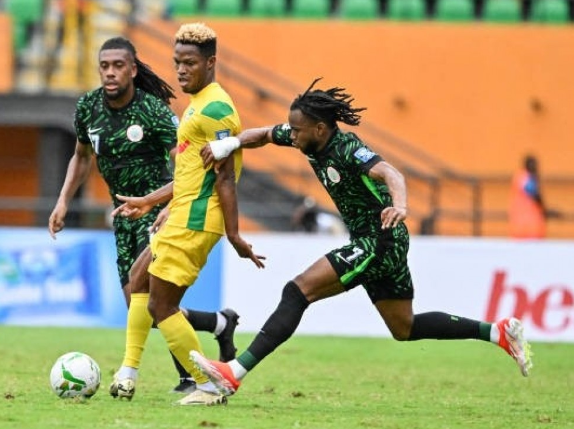On July 11, 2011, at the Commerzbank Arena in Frankfurt, the United States looked to be on the verge of its third World Cup Women's Soccer Championship in history. The U.S. took a one-nil lead in regulation time, but was surprised to see Japan's international Aya Miyama equalize in the 80th minute, and went into an extended period, where the U.S. broke through the Japanese goal first, as they had done, and held their opponents off until the referee looked down at his watch, ready to go into a final injury timeout. Until the referee looked down at his watch and prepared to enter the final injury time ......
At the age of six, Sawa Hiroshi has always loved playing with her older brother, and at the same time longed to be a member of the soccer team just like her brother. Sawa Hiroshi proposes to the coach that she play in a local tournament called the "Kashoe Cup", and then decides whether or not to allow her to participate in the team's practices if she feels she can keep up with the team's intensity. Although she was one of the smallest players on the field, she showed amazing talent, especially her desire and hard work for soccer, so that the coach did not hesitate to let her join the team's training. Nakamura Kenkou, a Japanese international footballer who used to play in the same club as her, said, "She is tougher than the boys on the soccer field, especially her powerful shot! than all of us."
Four years later, at the age of thirteen, Sawahoko no longer suffers from the lack of a girls' soccer team in her school or community, because in her first year of middle school she was already recognized by the Japan
women's soccer
The first power Yomiuri women's soccer team signed (the predecessor of the current Nippon Television Beauty), in 1993, Zawa Hoshi was selected for the Japanese national team, in the Asian Cup Women's Soccer Qualifying Tournament against the Philippines debut, the game she killed the four sides scored four goals, for the first time on the international stage, and from then on for the next two decades, Zawa san, became synonymous with the women's soccer in Japan.
1999 Japan
women's soccer
As the league struggled, many teams withdrew from the tournament, and many female players were affected, Sawa decided to drop out of college and go to the U.S. to challenge herself, and in 2001, she joined the once-prosperous U.S. Women's Major League Soccer and played for Atlanta, which seemed to be a perfect start for her at the prime age of 23 years old, but she didn't expect that two years later, the U.S. Women's Major League Soccer was disbanded without warning due to huge losses. Unexpectedly, two years later, the USWNT was disbanded without warning due to huge losses, at which point Sawaho Hiroshi not only suffered a heavy blow to her career, but was also faced with a decision in her relationship.
She wanted to at one point.
demobilize
She married her American boyfriend, but he asked her, "If you don't have soccer in your life, will you really be happy? At that time, Japanese women's soccer was still in the doldrums, and Sawasaki believed that only by playing well in the international arena could Japanese people pay attention to women's soccer again, and this could only be reversed if she worked hard with players of the same generation, so she treated herself as a watchman, and in addition to playing, she also went around promoting and giving speeches and helping the younger generation. In addition to playing soccer, she went around publicizing and giving speeches, and lifted up her juniors. Her energy on the field was always stronger than anyone else's, but in a few years' time, Japan
women's soccer
It was under Zahooshi's leadership that he made a name for himself in international soccer.
From the near collapse of the Japanese women's league, to playing in the U.S. and being disbanded by Major League Baseball; from not being able to participate in high-intensity games as a child, to
the national team
Repeatedly frustrated in international matches, Sawasaki's soccer path seems to have been at the top, but in fact it was constantly over one high wall after another, and in a speech to Japanese women's soccer players, she thus left behind the "If you feel pain, just look at my back! She also left behind the classic quote "If you feel pain, look at my back!
Back on July 11, 2011, in the extended final of the World Cup Women's Soccer Final, just as the game was coming to an end, Japan was given a corner kick, a low drive towards the near post, where Sawasaki stepped in front of the U.S. defenders and, with her back to the goal, kicked the ball into the dead center of the net with the outside back of her right foot in a high-stakes "
Ibu
The "goal" forced the game into a PK battle, and the morale of the tied USA team was shattered, and they eventually lost in the PK battle, allowing Japan to win the Women's World Cup for the first time in its history.
A 34-year-old veteran who even faced questions about whether he should retire before the tournament, Sawasaki beat a group of the best strikers from around the world as a midfielder to take the tournament's goal-scoring crown with five goals, including this one of the best and most valuable shots in women's soccer history, to lead his team to eliminating then
women's soccer
The strongest three teams Germany, Sweden, the United States, there is no doubt that this is Sawasaki's World Cup, but also Sawasaki's soccer year, Sawasaki undisputedly took the Miss World Soccer of that year, in the annual meeting of FIFA, Sawasaki with the
Lionel Messi (1987-), Argentine footballer
Together on the podium, Sawasaki created an era for herself and for Japan.






























